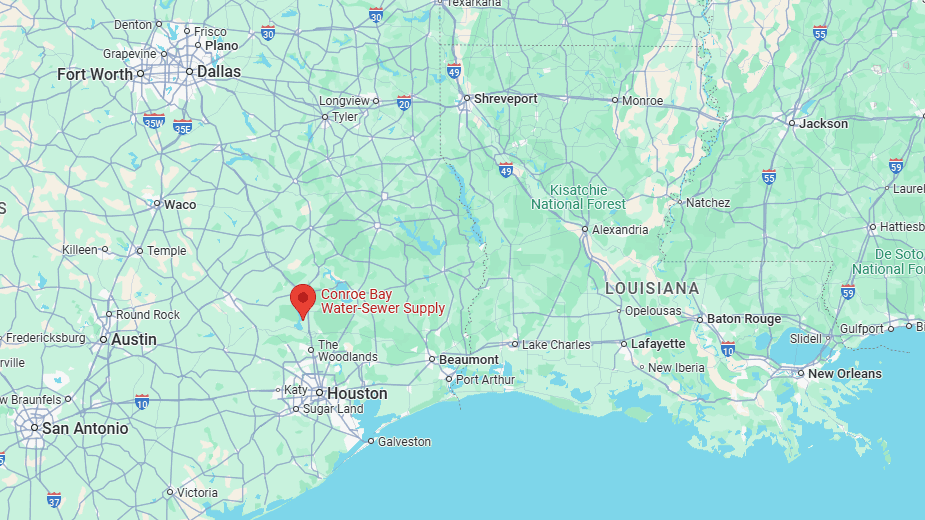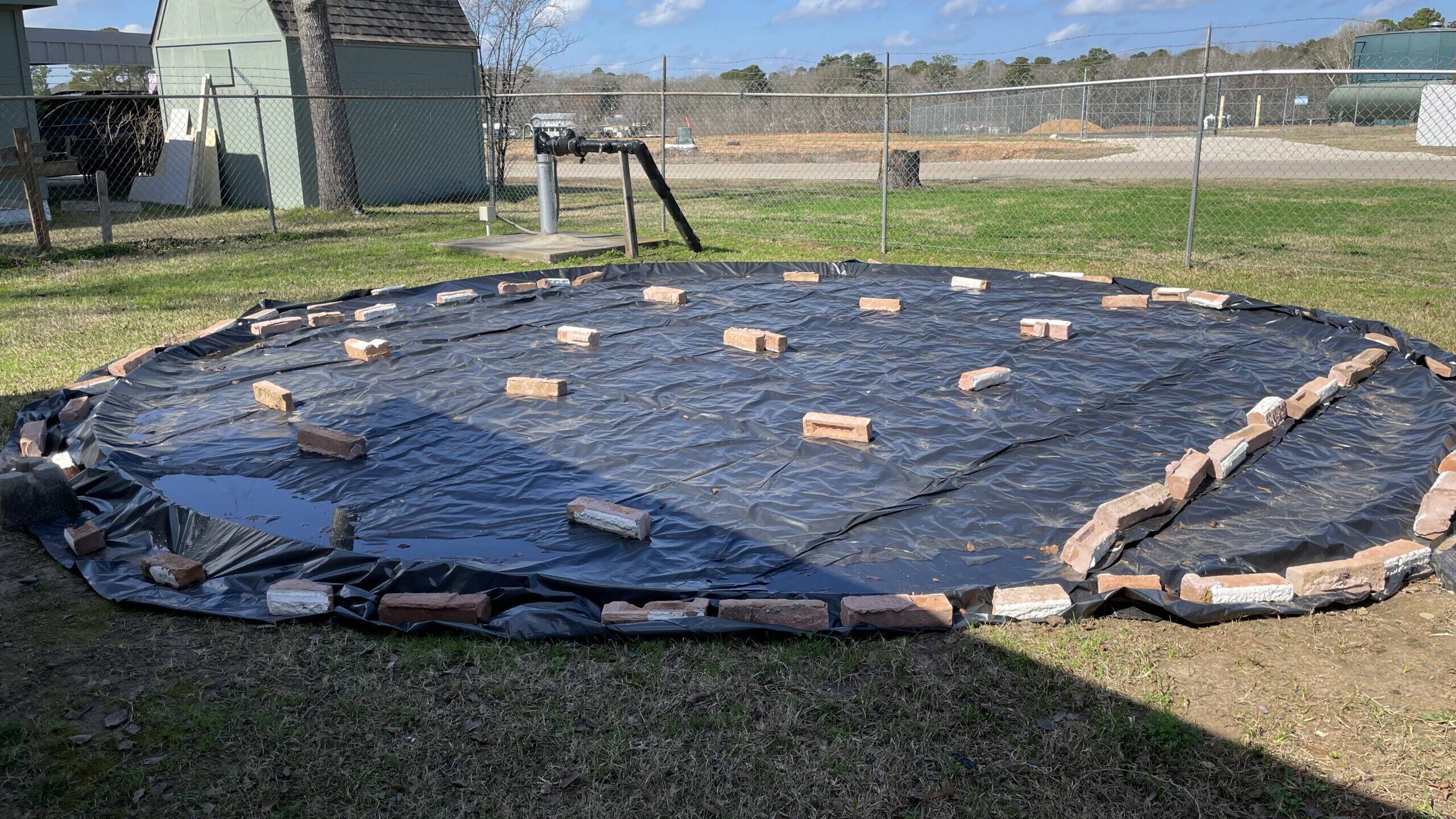In the neighborhood of Conroe Bay, located in Willis, Texas, in Montgomery County just outside of Houston, the hum of daily life depends on something many take for granted: clean, reliable water. The Conroe Water-Sewer Supply Corporation (WSSC) has served as the lifeblood of this 113-home community.
Built in the early 1970s and owned by the residents themselves, Conroe’s water and sewer system reflects a long-standing commitment to community ownership. The system is managed by an elected Board of Directors, with property owners actively participating in decision-making.

“We knew the system was old — built in 1972 — and it was only a matter of time before something major needed replacing,” Conroe WSSC Director Dan Lynam said. “Our engineer had already warned us that the storage tank wouldn’t last much longer, and unfortunately, he was right.”
The 43,000-gallon galvanized steel tank developed a hole in its base, making repairs impractical. As Lynam recalled, “We had repair experts come out, and they said, ‘We can fix it, but it’s not worth the cost. You might as well replace it.’” The decision was clear, but the path to securing funding wasn’t.
Conroe WSSC’s relationship with the Community Infrastructure Team at Communities Unlimited (CU) spans decades, dating back to 1994. “We borrowed $75,000 from them back then, and it was a great experience,” Lynam said. So, when the storage tank failed, he knew exactly who to call.
In 2022, Lynam reached out to Chad Brown, a Community Environmental Management Specialist at CU. Brown quickly recognized the urgency of the situation and connected Lynam with Senior Economic Development Loan Officer Chris Ranniger, who specializes in CU’s Infrastructure Lending.
“Chad got the ball rolling fast,”
— Dan Lynam, Conroe WSSC Director
“Chad got the ball rolling fast,” Lynam said. “I first spoke to him in December, and he immediately sent me a list of what was needed. He told me, ‘If you can get this information quickly, we can knock this out.’”
By January 2024, CU had approved a $60,000 loan to help Conroe Bay WSSC replace the tank. The community also contributed nearly $40,000 of its own funds to the project. CU’s funding will help ensure that Conroe WSSC can remain self-reliant in the future, avoiding the need to rely on external utilities or costly emergency measures.
The new 32,000-gallon bolted steel storage tank is designed to meet the community’s current and future needs. With a maximum capacity of 146 homes, Conroe Bay WSSC worked closely with its engineer to ensure the new tank would meet Texas Commission on Environmental Quality (TCEQ) requirements.
“We’ve already removed the old tank,” Lynam said. “The sand base is ready, covered with polyethylene to prevent erosion, and we’re just waiting for the manufacturer to call us once the tank is ready.”
The new tank is expected to be delivered in June 2024, with installation taking approximately two to three weeks.

“Without a storage tank, the water goes directly from the well to the pressure tank, which overworks the system,” Lynam said. “The sooner we get off this temporary setup, the better.”
For Conroe WSSC, compliance with state regulations isn’t just a legal requirement — it’s essential for the community’s well-being. Texas law mandates that water systems serving more than 55 customers must have a ground storage tank, and with 113 residents currently and the potential for future growth, the new tank is an important investment.
“Without it, we’d continue facing issues with water pressure and chlorination,” Lynam said. “When the water comes out of the well, it needs pressure to inject chlorine into the system. Right now, the temporary setup is creating pressure problems, but once the new tank is installed, we’ll meet all the TCEQ requirements.”
Reflecting on the lending process, Lynam had nothing but praise for CU.
“It’s been an A+ experience,” he said. “Chad Brown and the whole team were excellent. They moved things very quickly.”

